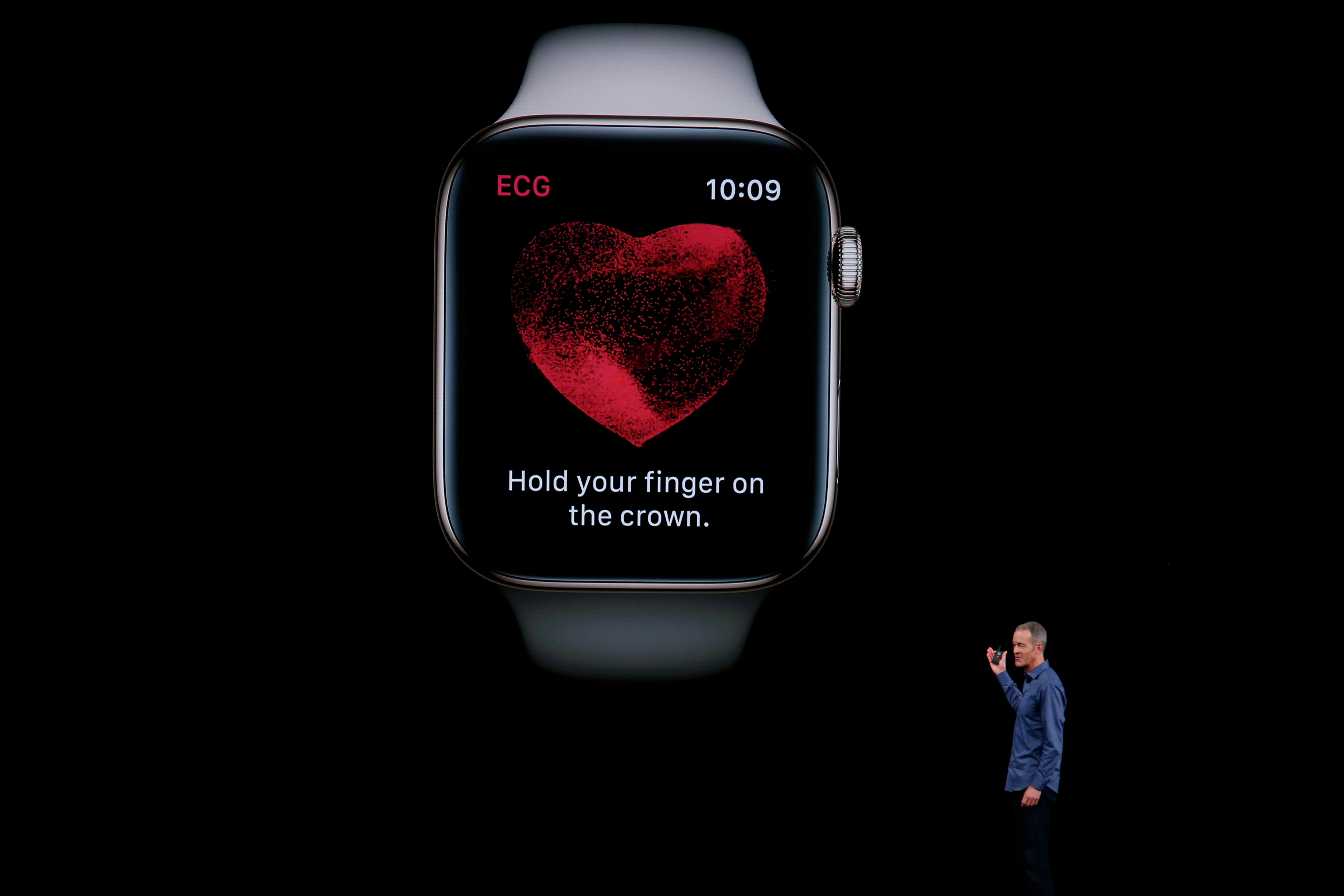Jeff Williams introduces the new Apple Watch capable of taking an FDA-approved electrocardiogram at the company’s annual product launch, Wednesday, Sept. 12, 2018, in Cupertino, Calif.
Karl Mondon | Digital First Media | Getty Images
Apple’s invitation for big event included the tag line “Time Flies,” a hint that we can expect to see a slew of announcements related to its Apple Watch on Tuesday.
At least one analyst believes there’ll be a new model, the Apple Watch 6.
Health and fitness has been a major focus for the product ever since Apple started selling it in 2015. The team has rolled out feature after feature, moving from basic activity tracking to heart rhythm monitoring and more.
But there are technical and scientific limitations to what can be packed into a wrist-worn device. Some of the most challenging applications that have eluded wearable makers so far include noninvasive and continuous blood sugar, as well as blood pressure tracking. If either of those sensors were announced, it would be a major breakthrough, but we don’t expect those Tuesday.
More likely, Apple will roll out some more achievable wins that will still put it ahead of the competition. The Apple Watch has dominated the wearables market for the last five years, but Google‘s proposed acquisition of Fitbit could give it an infusion of new talent and cash (if regulators approve the deal), and Amazon made a splashy entrance into the space earlier this year with its Halo fitness wearable.
Workouts for everyone stuck at home
Members exercise inside Chelsea Piers Fitness, Manhattan’s largest fitness facility on the first day of the re-opening of gyms in New York City following the outbreak of the coronavirus disease (COVID-19) in New York, September 2, 2020.
Mike Segar | Reuters
The wellness space is an attractive opportunity for any consumer technology company, because it’s both a big market and largely unregulated. Apple’s growing team includes veteran fitness trainer and consultant, Jay Blahnik, who likely has big plans for Apple Watch.
In March, CNBC reported that Apple is working on a new app codenamed Seymour that guides users through exercise routines on the Apple Watch and iPhone. Users can follow along via downloadable videos and try out a range of activities from cycling to strength training. By offering this kind of fitness content, Apple is moving closer to Peloton‘s territory. Along with its spin bikes and treadmills, Peloton sells a subscription-based video library of fitness classes.
It would be a timely move for Apple, given that many gyms across the country remain closed and home workouts may still seem like a safer option during a pandemic.
From there, we could see Apple offering more tailored workouts for people with medical conditions like type 2 diabetes, which might even involve personalized coaching. Such a service could be subscription-based, if Apple can show there’s an appetite for it.
An oxygen sensor
One long-rumored sensor that we could see from Apple on Tuesday is a pulse oximeter, which would allow the watch to detect blood oxygen levels. A blood oxygen detection feature was detected by 9to5 Mac in a snippet of code back in the spring, strongly suggesting that it’s on the horizon.
If the code is any indication, Apple could start notifying users if their blood oxygen levels drop to concerning and potentially dangerous levels.
This new feature will likely be released alongside medical studies, just as Apple has done in the past. The Apple Heart Study, which it unveiled in collaboration with Stanford, looked at how effectively the Apple Watch could be used to detect a condition known as atrial fibrillation. Apple has an electrocardiogram sensor baked into its Apple Watch Series 4 and Series 5 devices to monitor the heart’s rhythm and return health information directly to consumers.
If Apple announces the sensor, it’s possible that the company will look to screen asymptomatic people rather than honing in those with a specific medical condition. Apple wants its device to be accessible and relevant to a large population of users. But it would need to prove to doctors that it won’t generate unnecessary anxiety and concern by delivering false positive results.
Or, Apple might look to target users with specific medical conditions, including the covid-19 coronavirus. A pulse oximeter baked into a consumer wearable might well be useful in helping medical professionals monitor patients at home who have been diagnosed with the virus. Doctors are still debating whether the currently-available devices, which work by clipping onto a patient’s finger to measure heart rate and oxygen saturation, might be helpful in monitoring shortness of breath which can be hard for patients to assess themselves.
What do you think will be announced at Tuesday’s event? Let us know @CNBCTech.
